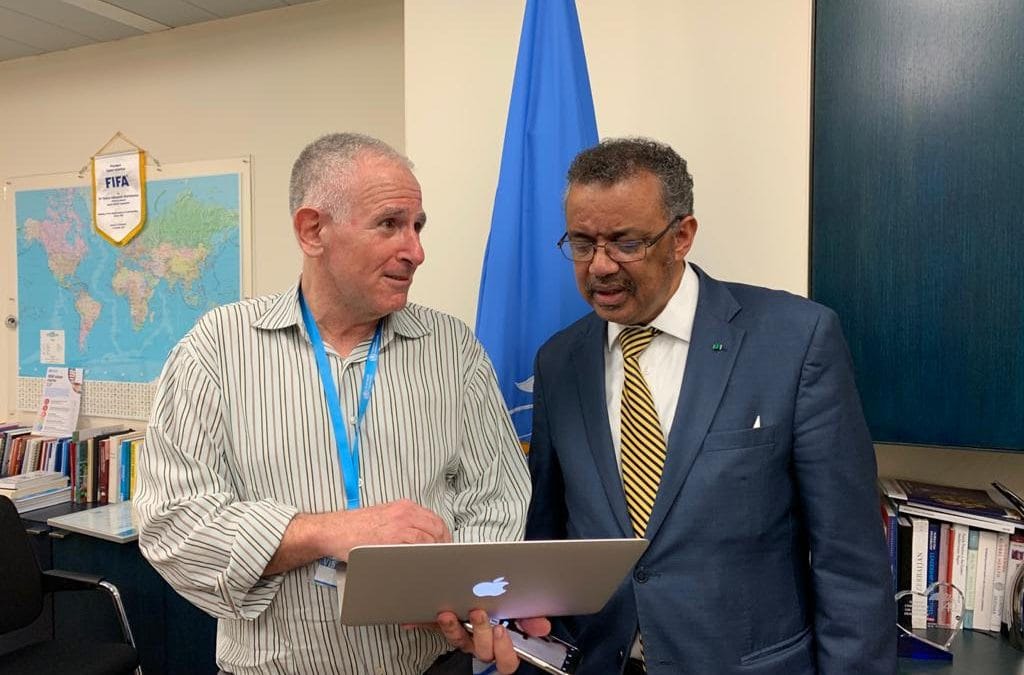Virt Seeks To Serve As The Hub To Find And Join Virtual Events
Launched last week, virt.com hopes to take advantage of the rise in virtual events by crowdsourcing them in one place.

April 13, 2021 – Global Health Strategies, the global advocacy group focused on health and policy, last week launched Virt.com, a new open-source media platform that crowdsources virtual events on various issues.
Those “issue channels” include health, Covid-19, climate and environment, gender, food and nutrition and human rights. It relies on users in different regions posting about upcoming events in those categories.
The launch last week coincided with a new ad campaign called Unmutetheworld, focused on digital equity around the world with the belief that internet access is a human right. It includes partnering with groups like National Digital Inclusion Alliance and grassroots organizations in many different countries.
“The pandemic has transformed our lives. The way we connect, the way we celebrate, the way we mourn, the way we work, access healthcare and learn, has changed,” GHS CEO David Gold said in an interview. “Broadband allows us to connect virtually even during the pandemic, but so many people don’t have access to the internet, they cannot connect, and we have to change that,” he said.
Gold described Virt as a way to connect people globally to meaningful conversations about health, science, policy, technology, among other topics. “We have a window of opportunity right now with the pandemic to really change. Despite all the terrible effects of COVID-19, we have this moment in time to make the case for big investments,” he said.
Gold highlighted the work of GHS and the Unmutetheworld campaign to connect people across different nations. “Broadband access comes to the heart of economic development, we have to take that momentum in the U.S. and expand it around the world,” he said.
Broadband is becoming increasingly more important, with more people working, schooling, or using health services virtually than ever before due to the pandemic.
Broadband central to digital activities
“Broadband used to be a ‘nice to have,’ now it is a ‘must have,’” Angela Siefer, executive director at NDIA, said in an interview. “Twenty years ago, we were worried about having enough computers in a classroom and lucky that one of them connected to the internet, but that has changed now, and we need to keep up with the technology. It permeates our whole lives,” she said.
President Joe Biden recently announced a new $2.3-trillion infrastructure proposal called the American Jobs Plan, which includes $100 billion for broadband programs over eight years. Congress has also recently introduced legislation on broadband initiatives, including $100 billion as part of the Leading Infrastructure for Tomorrow’s America Act, or LIFT America Act, sponsored by the Democratic delegation on the House Energy and Commerce Committee.
“We are excited about the potential of these government initiatives, not just for funding deployment, but also to address affordability, digital literacy skills and devices,” Siefer said. “We’ve never had this much awareness about broadband issues. We’re seeing real ideas being put into action.”
Siefer also mentioned state-level efforts to expand broadband, including recent legislation in New York and Maryland. Maryland plans to spend $300 million of federal funding from the American Rescue Plan on broadband programs, including infrastructure, subsidies for fees and devices, and grants for municipal broadband. New York state recently announced the 2022 fiscal year budget including a $300 billion infrastructure package that contains broadband subsidies for low-income residents and an emergency fund to provide economically-disadvantaged students with free internet access.
“We’re seeing a shift to address adoption and affordability at both the state and federal level, where previously we only saw discussion of availability,” Siefer said. “It’s not just about unserved and underserved areas when it comes to digital equity, because the infrastructure might be there, but people are not participating in broadband for a variety of reasons,” she said. “Affordability and digital literacy lock people out. New programs aim to solve that problem and get people connected.”










Member discussion